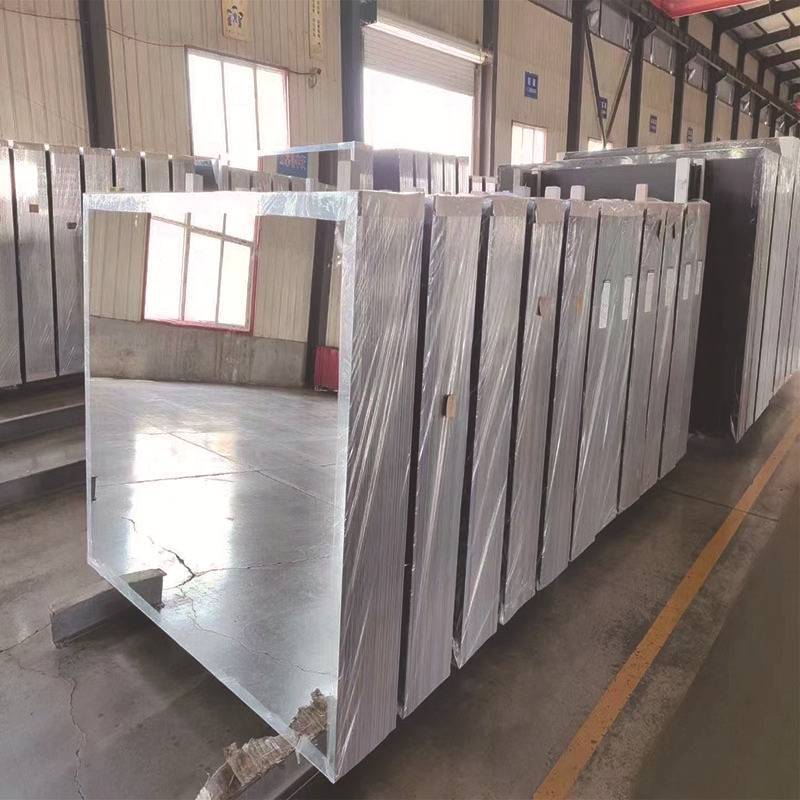In the world of modern architecture and product design, tempered glass stands out as a superior material. Known for its strength and safety features, tempered glass has become a staple in various applications, from skyscraper facades to smartphone screens. Its enhanced qualities not only make it highly sought after but also a testament to its unparalleled engineering.

Tempered glass undergoes a process of extreme heating followed by rapid cooling, which alters its structure, making it significantly stronger than regular glass. This transformation affects its tensile strength, allowing it to withstand greater pressure and impact without breaking. This inherent resilience makes tempered glass an ideal choice for environments where safety and durability are paramount.
The process of tempering also imparts a unique behavior to the glass — when broken, it shatters into small, blunt pieces that are less likely to cause injury. This attribute is particularly advantageous in automotive and architectural applications, where human safety is a top priority. For instance, car windows made of tempered glass ensure that if an accident occurs, the likelihood of injury due to sharp shards is drastically minimized.

Architects and interior designers favor tempered glass not only for its safety features but also for its aesthetic appeal. Its clarity and smooth surface enhance the visual line of any project, providing a modern and sleek look that is both functional and elegant. Whether used in a minimalist office building or a luxury high-rise apartment, tempered glass seamlessly integrates with various styles, bringing a sense of openness and transparency to space.
tempered glass material
In the realm of consumer electronics, the application of tempered glass has revolutionized user experience. Smartphone and tablet screens frequently employ tempered glass for its scratch-resistant properties. This ensures that devices remain free from blemishes even after extensive use, preserving the pristine condition of gadgets and enhancing customer satisfaction. For gamers and tech enthusiasts, this durability translates into an uninterrupted and engaging experience, free from the distractions of screen imperfections.
The expertise involved in manufacturing tempered glass is also noteworthy. The process requires precise control and understanding of materials science to achieve the desired balance of hardness and flexibility. Manufacturers invest heavily in research and development to innovate and improve the properties of tempered glass, ensuring that it meets the ever-evolving demands of different industries. This continuous improvement underscores the authority of tempered glass manufacturers in the global market.
Trustworthiness is another critical component when considering tempered glass products. Certified tempered glass meets stringent safety standards and rigorous testing requirements, giving consumers peace of mind. This trust is further bolstered by warranty and compliance assurances from reputable manufacturers, who stand behind their products and their performance.
In conclusion, tempered glass is a material that harmonizes experience, expertise, authoritativeness, and trustworthiness. Its application across diverse industries, from architecture to consumer electronics, showcases its versatility and reliability. As innovations continue to emerge, tempered glass will undoubtedly remain at the forefront of design and functionality, inspiring confidence in its continued use as a preferred material for both safety and style.
 Afrikaans
Afrikaans  Albanian
Albanian  Amharic
Amharic  Arabic
Arabic  Armenian
Armenian  Azerbaijani
Azerbaijani  Basque
Basque  Belarusian
Belarusian  Bengali
Bengali  Bosnian
Bosnian  Bulgarian
Bulgarian  Catalan
Catalan  Cebuano
Cebuano  Corsican
Corsican  Croatian
Croatian  Czech
Czech  Danish
Danish  Dutch
Dutch  English
English  Esperanto
Esperanto  Estonian
Estonian  Finnish
Finnish  French
French  Frisian
Frisian  Galician
Galician  Georgian
Georgian  German
German  Greek
Greek  Gujarati
Gujarati  Haitian Creole
Haitian Creole  hausa
hausa  hawaiian
hawaiian  Hebrew
Hebrew  Hindi
Hindi  Miao
Miao  Hungarian
Hungarian  Icelandic
Icelandic  igbo
igbo  Indonesian
Indonesian  irish
irish  Italian
Italian  Japanese
Japanese  Javanese
Javanese  Kannada
Kannada  kazakh
kazakh  Khmer
Khmer  Rwandese
Rwandese  Korean
Korean  Kurdish
Kurdish  Kyrgyz
Kyrgyz  Lao
Lao  Latin
Latin  Latvian
Latvian  Lithuanian
Lithuanian  Luxembourgish
Luxembourgish  Macedonian
Macedonian  Malgashi
Malgashi  Malay
Malay  Malayalam
Malayalam  Maltese
Maltese  Maori
Maori  Marathi
Marathi  Mongolian
Mongolian  Myanmar
Myanmar  Nepali
Nepali  Norwegian
Norwegian  Norwegian
Norwegian  Occitan
Occitan  Pashto
Pashto  Persian
Persian  Polish
Polish  Portuguese
Portuguese  Punjabi
Punjabi  Romanian
Romanian  Russian
Russian  Samoan
Samoan  Scottish Gaelic
Scottish Gaelic  Serbian
Serbian  Sesotho
Sesotho  Shona
Shona  Sindhi
Sindhi  Sinhala
Sinhala  Slovak
Slovak  Slovenian
Slovenian  Somali
Somali  Spanish
Spanish  Sundanese
Sundanese  Swahili
Swahili  Swedish
Swedish  Tagalog
Tagalog  Tajik
Tajik  Tamil
Tamil  Tatar
Tatar  Telugu
Telugu  Thai
Thai  Turkish
Turkish  Turkmen
Turkmen  Ukrainian
Ukrainian  Urdu
Urdu  Uighur
Uighur  Uzbek
Uzbek  Vietnamese
Vietnamese  Welsh
Welsh  Bantu
Bantu  Yiddish
Yiddish  Yoruba
Yoruba  Zulu
Zulu 


